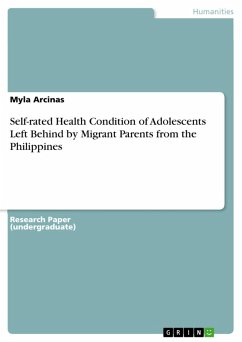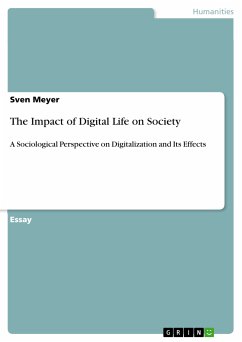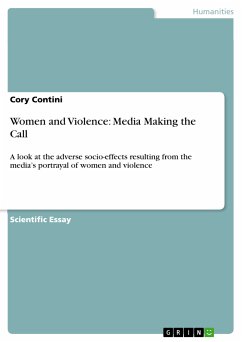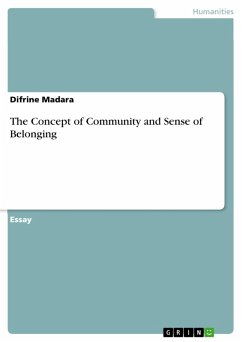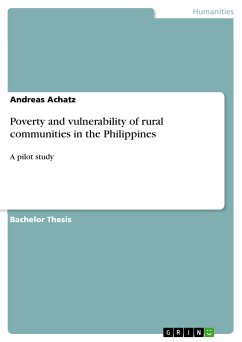
Poverty and vulnerability of rural communities in the Philippines (eBook, PDF)
A pilot study

PAYBACK Punkte
0 °P sammeln!
Bachelor Thesis from the year 2010 in the subject Sociology - Individual, Groups, Society, Management Center Innsbruck (Non Profit- social- and healthcare management), language: English, abstract: This paper outlines different categories of vulnerabilities for poverty and their intertwining dependencies. Risks and vulnerabilities limit the activities and opportunities that can be undertaken to reduce poverty. Beside adverse events such as climate change, typhoons, floods and droughts, the livelihood can be seen as the primary source of vulnerability. In consequence a process of environmental d...
Bachelor Thesis from the year 2010 in the subject Sociology - Individual, Groups, Society, Management Center Innsbruck (Non Profit- social- and healthcare management), language: English, abstract: This paper outlines different categories of vulnerabilities for poverty and their intertwining dependencies. Risks and vulnerabilities limit the activities and opportunities that can be undertaken to reduce poverty. Beside adverse events such as climate change, typhoons, floods and droughts, the livelihood can be seen as the primary source of vulnerability. In consequence a process of environmental degradation, a lack of opportunities and a lack of agricultural inputs is arising out of ignored vulnerabilities. Through a standardized questionnaire a broad range of underlying factors, processes and different constructions of vulnerabilities are compared and analyzed. 247 rural Philippine households in twelve different communities contributed to the survey. The comparison of different factors (health, economy agriculture, environment, education and community integration) highlights a set of indicators to measure vulnerabilities for poverty. Moreover, core dependencies and their intertwining sub-dependencies have been emphasized. Triangulation completes the picture of poverty and its vicious circle. A qualitative research through focus group discussions has drawn an overview of the community health needs. Furthermore the results have been underpinned by literature research. The output of the study results in indicators of vulnerabilities to poverty. These indicators allow the objective measurement of poverty and consequently the increase of local capacities on a cross sectoral basis. Addressing risks, vulnerabilities and poverty on current data is essential to meet the needs of the communities and to achieve sustainability.
Dieser Download kann aus rechtlichen Gründen nur mit Rechnungsadresse in A, B, BG, CY, CZ, D, DK, EW, E, FIN, F, GR, HR, H, IRL, I, LT, L, LR, M, NL, PL, P, R, S, SLO, SK ausgeliefert werden.




